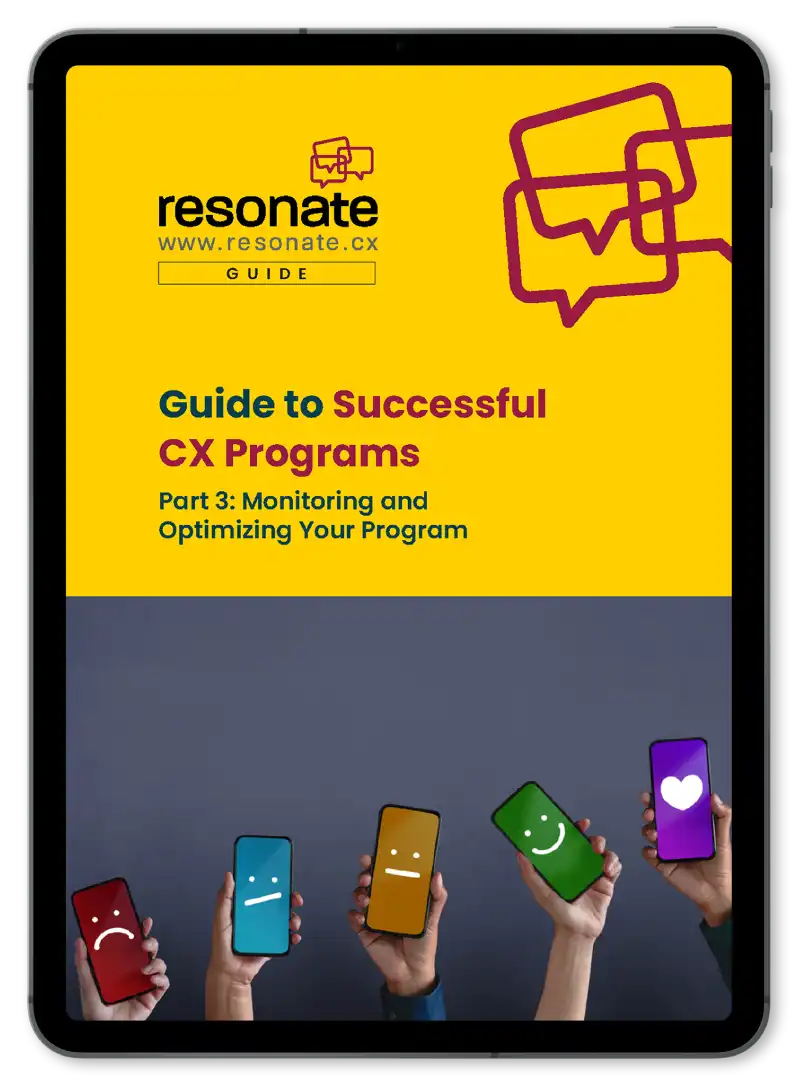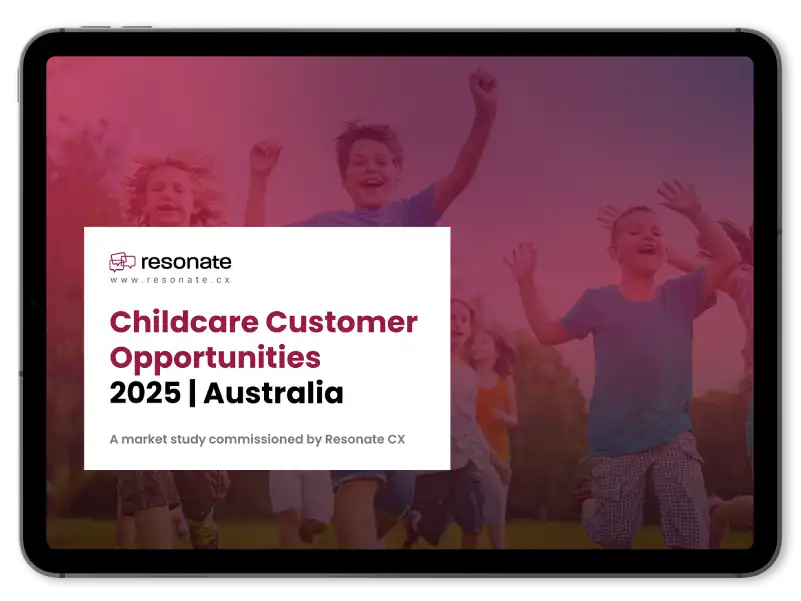I. Introduction to Customer Experience Automation
Customer experience has long been one of the most challenging aspects of running a business to automate. While you can do a lot with the customer experience solutions currently available in the market, the unpredictability and complexity of human reactions and behaviours demand a nuanced understanding of customer emotions, situational contexts, and problem-solving strategies. For that reason, solutions for scaling up customer experience have always come with some compromises. That is, up until recently.
Using modern technology makes managing customer experience more efficient. As your business and its customers’ expectations grow, intelligent customer experience automation will be key to consistently achieving customer satisfaction.

In this guide, you’ll learn:
How to Monitor & Optimise Your CX Programs
A. Definition of CXA
Customer experience automation (CXA) refers to the use of technology and automated processes to streamline interactions between businesses and customers across multiple touchpoints.
Think of CXA like a helpful assistant for your team. It doesn’t replace their jobs. Rather, it gives them the tools and information they need to work smarter and faster. This way, they can give customers a better experience from start to finish.
B. CXA vs. Related Concepts
To better understand CXA, it’s helpful to know how it differs from similar concepts.
- CXA vs. CRM (Customer Relationship Management)
CRM helps you organise customer info and track your interactions—like a smart digital filing cabinet. CXA takes that info and acts on it automatically, using AI to send the right message at the right time. While CRM keeps things tidy, CXA brings the journey to life with personalised, hands-off experiences.
- CXA vs. Marketing Automation
Marketing automation focuses on streamlining specific tasks such as email campaigns, customer segmentation, and lead nurturing to drive engagement and conversions. CXA, on the other hand, manages the entire customer lifecycle—from initial engagement and purchase to post-sale interactions—ensuring a more holistic and personalised experience at every touchpoint.
- CXA vs. CXM with AI
CXA is about using tools and technology to make customer interactions smoother and faster without needing human help every time. For example, automated emails after a purchase, chatbots answering common questions, or personalised product recommendations based on browsing history.
CXM with AI, on the other hand, is about listening to what customers are saying—through surveys, feedback forms, reviews, or social media—to understand their needs, pain points, and expectations. It’s all about gathering and analysing customer opinions to improve products and services.
C. Business Benefits and Impact of Implementing CXA
Businesses that set up a sustainable CXA programme will enjoy the following benefits:.
- Cost Savings and Operational Efficiency
Automating customer interactions allows smaller teams to take on larger workloads without compromising service quality. In fact, service often gets better because staff spend less time on repetitive tasks and more time on things that really make a difference.
- Increased Customer Retention and Lifetime Value
CXA helps you consistently deliver the right message at the right time. This kind of consistency builds trust and loyalty, making customers stick around longer and lowering the cost of making a sale.
- Lowered Churn and Repeat Customer Growth
Having a CXA system makes proactive issue resolution both consistent and sustainable. This contributes to stronger repeat business and encourages lower churn rates.
II. Key Components of CXA
While CXA programmes can differ between operations, they will always include the following components:
A. Orchestration
This involves mapping customer journeys to create seamless experiences across relevant touchpoints. For instance, a company can use orchestration to synchronise communication across mobile, email, and in-app channels, breaking down silos and enabling the business to effectively appear as a single entity when communicating with customers.
B. Segmentation
Segmentation involves grouping customers based on their behaviours or demographics to deliver targeted interactions. CXA programmes use segmentation tools and techniques to engage distinct customer segments with tailored messaging.
C. Personalisation
Personalisation entails delivering relevant, customised experiences based on collected data. Depending on the challenge, various AI and automation solutions can be employed to send contextually relevant messages to the right customers, improving engagement.
D. Automation
Automation removes human input from process chains, streamlining activities like ticket routing and response handling. When done right, automation improves operational efficiency in customer interactions while minimising negative impacts.
III. Practical Applications of CXA
Customer experience automation transforms how businesses connect with customers. By automating personalised email campaigns and AI-driven chatbots, companies can enhance support and engagement effortlessly.
Automated feedback collection and sentiment analysis help businesses uncover insights without manual effort. Additionally, CXA streamlines onboarding, loyalty programmes, and proactive service by triggering timely responses based on customer behaviour.
Social media monitoring and automated cross-selling further enrich the customer journey, while efficient ticket routing and feedback-driven product updates ensure swift issue resolution and innovation. Ultimately, embracing CXA not only saves time but also elevates customer satisfaction and loyalty.
Here are just some of the key applications of CXA:
A. Personalised Email Campaigns
Automate triggered emails based on customer behaviour, like abandoned carts or post-purchase follow-ups.
B. Chatbots for Instant Support
Use AI-driven chatbots to handle common queries and escalate complex issues to human agents.
D. Feedback Collection and Analysis
Automate surveys and sentiment analysis to gather insights without manual intervention.
E. Customer Onboarding
Create automated onboarding sequences with step-by-step guidance and helpful resources.
F. Proactive Customer Service
Trigger alerts for potential issues based on usage patterns, allowing teams to reach out before complaints arise.
G. Loyalty Programme Management
Automate rewards and reminders based on purchase history and engagement levels.
H. Social Media Monitoring
Use automation tools to track and respond to brand mentions and customer feedback in real-time.
I. Cross-Selling and Upselling
Automate product recommendations during checkout based on browsing and purchase history.
J. Service Ticket Routing
Automatically assign tickets to the right departments based on issue types and urgency.
K. Feedback-Driven Product Updates
Automate the collection of feature requests and prioritise them based on frequency and sentiment.
IV. The Future of CXA: What’s Next?
Customer experience automation has already revolutionised how businesses understand and serve their customers. However, as impressive as today’s CXA capabilities are, they will pale in comparison to what the next generation of AI-powered technologies will bring.
As AI advances, CXA will unlock ultra-personalised experiences, smarter predictions, and seamless journeys that blend online, offline, and even virtual worlds.
Of course, as AI-driven automation becomes more pervasive, malicious actors will inevitably use AI to enable attacks at a far greater scale. Even now, regulators and cybersecurity experts are anticipating tremendous challenges, with many countries now deliberating or even passing new laws on data privacy and ethical AI. While it’s impossible to tell how future legislation will impact emerging CXA technologies, some pushback on AI is to be expected.
Also, as with any technology, the general public will also become more knowledgeable about how ‘intelligent’ automation works. As customers share tips on how to ’game’ automated processes—such as using angry tones or choice keywords to trigger escalations—businesses must continually tweak CXA systems to maintain effectiveness.
Lastly, the growing sophistication of CXA will doubtlessly exert pressure on businesses. Those who embrace the technology’s transformative potential will clearly have a leg up in the new era of CXA. However, sustainably scaling CXA involves much more than technology, often demanding a rethinking of corporate structures alongside other uncomfortable changes. What is certain, however, is that we can all look forward to exciting times ahead.









